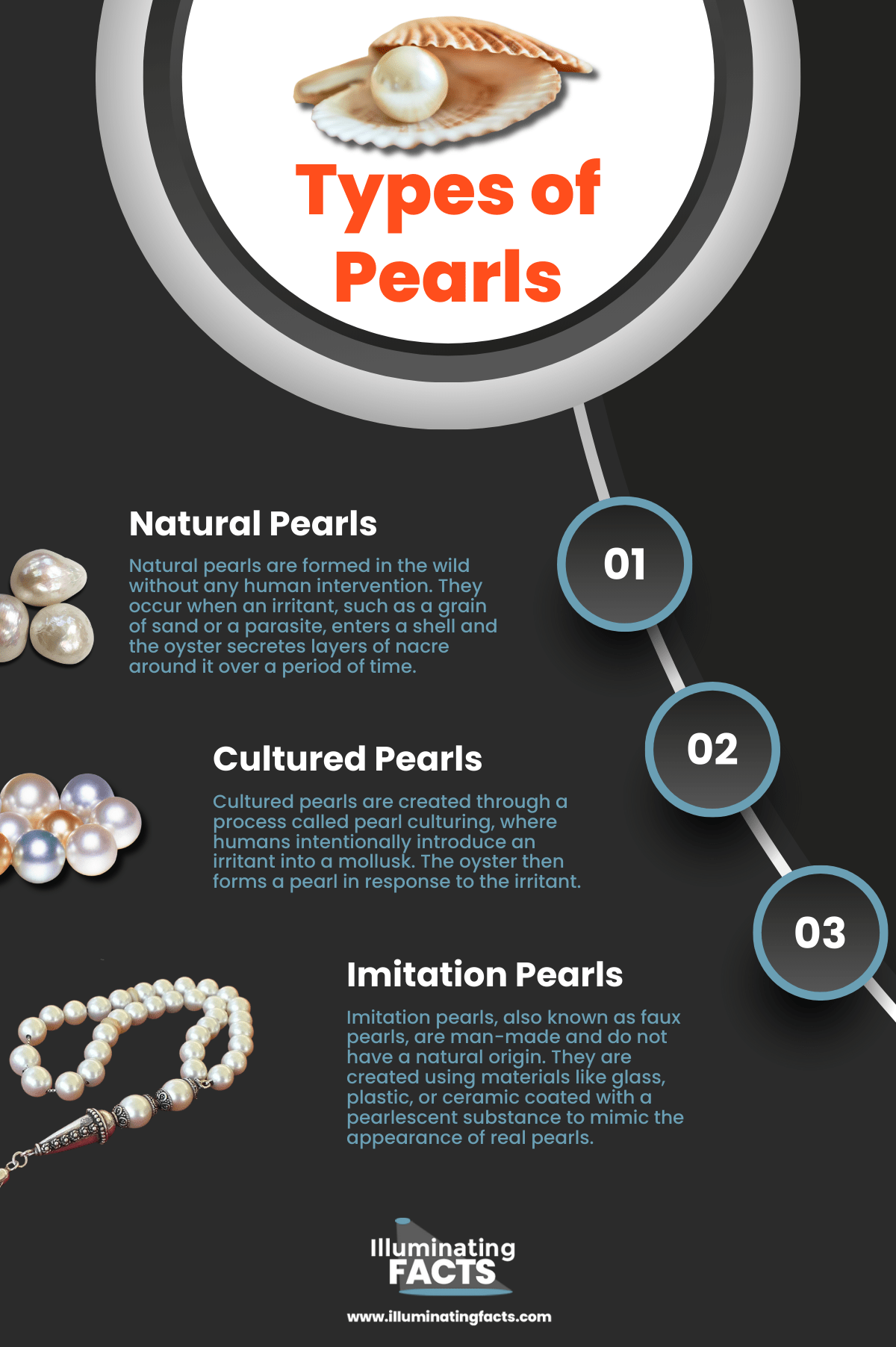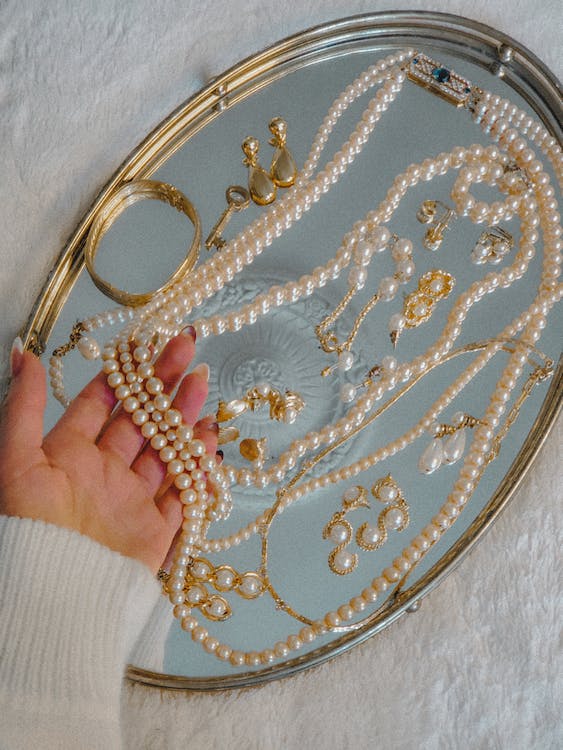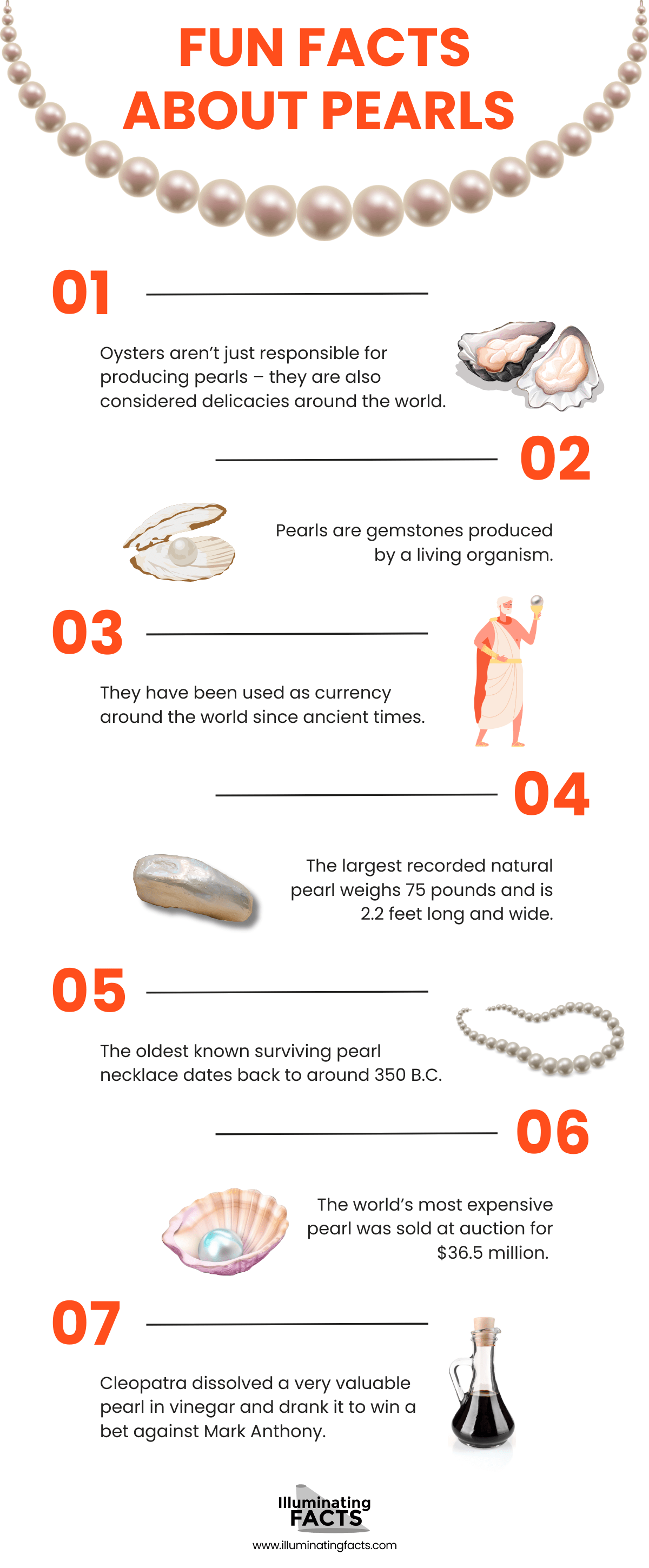Oysters have long been associated with luck in many cultures, and for good reason. There’s a chance that one of them may contain a pearl.
Pearls are one of nature’s most beautiful gifts. Found in many mollusks, they are highly prized by jewelers, collectors, and everyday people who love their unique beauty and symbolism. There is something special and mysterious about finding a pearl in its natural form, hidden inside the protective shell of an oyster. But what are the chances that you’ll discover one when opening an oyster? According to experts, the answer isn’t so simple.
In this post, we take a look at the factors that can affect the odds of finding a pearl in an oyster. We discuss the different types of pearls and the likelihood of randomly selecting a pearl-bearing oyster. Plus, we also share some tips on how to increase your chances of becoming a lucky pearlfinder. So, if you’ve ever wondered what are the odds of finding a pearl in an oyster, read on!
Background Information
Pearls were seen as symbols of wealth and power for centuries, with only the very wealthy owning them. There are many stories surrounding how these glistening orbs form:
- In ancient Greek mythology, pearls were believed to be the tears of the gods. According to the legend, when Aphrodite, the goddess of love and beauty, emerged from the sea, her tears of joy transformed into pearls as they touched the water. [1]
- In Chinese mythology, pearls were associated with dragons. It was believed that when a dragon breathed fire, the droplets of water and mist that formed as a result would transform into pearls when they touched the sea or ground.
- In Hindu mythology, it was believed that pearls were formed from moonlit dewdrops falling into the sea. The moonlight had a magical effect on the dewdrops, turning them into radiant pearls.
- In some Native American cultures, pearls were believed to be the tears of the thunderbirds or water spirits. When these powerful creatures shed a single tear that fell into the water and transformed into a pearl.
These stories are deeply rooted in cultural beliefs and have been passed down through generations. While they may not reflect the scientific process behind pearl formation, they continue to enchant and inspire us
How Pearls are Formed
Pearls have been highly valued for centuries and finding one inside an oyster is an exciting discovery. While pearls are often thought of as rare and valuable, it is important to understand how they form before trying your luck at finding one.
It begins when an irritant, such as a grain of sand or a parasite, finds its way into the soft tissue of the oyster. The oyster responds to this intrusion by coating the irritant with layers of nacre, a substance composed mainly of calcium carbonate.
How Pearls are Formed in Oysters
To understand how pearls are formed inside oysters we must first look at its anatomy. An oyster is made up of two shells that are connected together at one end by a strong hinge ligament which allows them to open and close their shells. Inside these two shells are three distinct sections known as:
- Mantle: A layer made up of simple columnar cells which secrete nacre and provide nourishment for larvae.
- Gills: To filter food particles and oxygen into a water stream.
- Digestive gland: to collect and store waste products.
The process of pearl formation can be divided into several stages:
- Irritation: A foreign object, such as a grain of sand, enters the mollusk’s body. This irritant causes discomfort to the mollusk and triggers a defence mechanism.
- Nacre secretion: The oyster secretes a substance called nacre, also known as mother-of-pearl, from special cells in its mantle. Nacre is composed of calcium carbonate in the form of microscopic crystals.
- Layering: The oyster continuously deposits layers of nacre onto the irritant, creating concentric layers that gradually build up and form the pearl. Over time, the pearl grows in size as more layers are added.
- Luster development: The overlapping layers of nacre give pearls their unique luster and iridescence. The light passing through the layers is refracted and reflected, producing the characteristic shimmering effect.
The exact process and time required for a pearl to form can vary depending on various factors, including the species of mollusk, the size and shape of the irritant, and the environmental conditions. It typically takes several months to several years for a pearl to develop.
Types of Pearls
There are several types of pearls available, each with its unique characteristics and value. The most notable ones include:
Natural Pearls
Natural pearls are formed in the wild without any human intervention. They occur when an irritant, such as a grain of sand or a parasite, enters a shell and the oyster secretes layers of nacre around it over a period of time.
Natural pearls are rare and highly valued due to their organic and unique formation process.
Cultured Pearls
Cultured pearls are created through a process called pearl culturing, where humans intentionally introduce an irritant into a mollusk. The oyster then forms a pearl in response to the irritant.
Cultured pearls can be either freshwater or saltwater pearls, depending on the type of mollusk used. They make up the majority of pearls available in the market today.
Imitation Pearls
Imitation pearls, also known as faux pearls, are man-made and do not have a natural origin. They are created using materials like glass, plastic, or ceramic coated with a pearlescent substance to mimic the appearance of real pearls. They may have a similar look, these pearls do not possess the same value or quality as natural or cultured pearls.
Imitation pearls are more affordable and can be found in a wide range of colors, shapes, and sizes. They are commonly used in fashion jewelry and accessories as an alternative to genuine pearls.
Difference Between Natural Pearls and Cultured Pearls
| Natural Pearls | Cultured Pearls |
| Natural pearls form without any human interference inside oysters. | Cultured pearls form with human interference by injecting an oyster with irritants so it secretes streams of nacre. |
| They typically form inside wild oysters. | They can form inside almost any species of oysters, but are typically grown in Akoya or South Sea Oysters. |
| They are extremely rare and valuable due to their rarity. | They are quite common and are not as valuable. |
| Being natural, their shapes tend to be less consistent. | Their shapes usually tend to be more consistent. |
Odds of Finding a Pearl in an Oyster
Although your chances of finding this gem is greater than winning the lottery, it’s still a tough treasure to find. The likelihood of snagging a pearl is about one in 10,000. [2] To find one that is gemstone quality is even tougher, one in a million! [3]
An unfortunate truth is that there is no way to 100% guarantee that you’ll find a pearl in an oyster. At first, it may seem like finding a pearl in an oyster is completely up to luck. (After all, no one really knows what’s inside an oyster until you open it up.) However, the odds vary greatly depending on the specific type of pearl. With a little bit of knowledge and a few simple calculations you can improve your odds of finding a pearl in an oyster. Let’s take a look at some factors that come into play when it comes to finding a pearl in an oyster.
Role of Luck
Nature plays a major role when it comes to the odds of finding a pearl in an oyster. This is largely due to the fact that pearls develop when an irritant enters the oyster’s body, a process completely out of our control. That said, beyond pure luck, there are certain factors that can increase your chances of finding a pearl in an oyster.
Factors Affecting the Odds
When it comes to calculating the odds of finding a pearl in an oyster, there are several factors to consider.
First, you need to think about the type of oysters or mussels that you are opening. Some species are more likely to produce pearls than others. For example, Australian freshwater mussels tend to have higher yields than saltwater varieties.
Second, you must consider the size and quality of the oysters. Larger and high-quality oysters generally have greater potential for developing pearls than smaller or lower-quality ones.
Finally, you should also be aware of the environment where the oysters or mussels were grown. Certain ocean temperatures and salinities can impact the chances of pearl production within an oyster species.
What Determines a Pearl’s Value?
Once a pearl has been found inside an oyster, its value is determined by several factors including its size, shape, color, and surface texture.
- Size: Larger pearls tend to be more valuable than small ones.
- Shape: Perfectly round pearls fetch higher prices than those with irregular shapes.
- Surface texture: Lustrous pearls with nearly flawless surfaces tend to be the most sought after among collectors.
- Color: Gleaming white pearls are considered more valuable than other ones.
These qualities, however, often depend on personal preference. For instance, one person may like a large off-round white pearl while another may fall for a small round pink one. So, there is no one-size-fits-all formula when it comes to evaluating pearls for their value.
Do Real Pearls Turn Yellow?
Yes, real pearls can turn yellow over time due to oxidation caused by contact with various elements such as air pollution, water exposure or even skin oils from the wearer’s body. Fortunately, this process can be reversed and will not necessarily decrease the value of your pearls. Simply cleaning them with a soft cloth and mild soap can help prevent and reverse oxidation.
It’s also important to store them in velvet lined boxes away from metallic objects to prevent scratching. You should also protect from prolonged exposure to sunlight or other harsh elements as this can accelerate yellowing.
Fun Facts
- Oysters aren’t just responsible for producing pearls – they are also considered delicacies around the world.
- Pearls are gemstones produced by a living organism.
- They have been used as currency around the world since ancient times.
- The largest recorded natural pearl weighs 75 pounds and is 2.2 feet long and wide. [4]
- The oldest known surviving pearl necklace dates back to around 350 B.C. [5]
- The world’s most expensive pearl was sold at auction for $36.5 million. [6]
- Cleopatra dissolved a very valuable pearl in vinegar and drank it to win a bet against Mark Anthony. [7]
Conclusion
Although finding a pearl in an oyster relies heavily on luck, understanding what type of oysters or mussels produce better results and evaluating them for size and quality can significantly increase your chances. Moreover, understanding how pearls form and their value once found can also help maximize returns from your endeavor.
Ultimately though, regardless if you find a precious gem or end up empty-handed, there’s still something quite exciting about opening up an oyster!
References:
- Bixby, A. (2020, June 30). Pearls of wisdom: Five things you may not know about pearls. The Met Store. https://store.metmuseum.org/blog/pearls-of-wisdom-five-things-you-may-not-know-about-pearls
- Pearl knowledge. (n.d.). Raw Pearls | Raw Pearls. https://rawpearls.com.au/pearl_knowledge
- Ledesma, J. (2022, May 22). What are the odds? Finding a natural pearl in an oyster. TPS Blog. https://www.thepearlsource.com/blog/natural-pearl-what-are-the-odds/
- Kirstin Harrington. (n.d.). The Largest Pearl Ever Found. https://a-z-animals.com/. https://a-z-animals.com/blog/the-largest-pearl-ever-found/
- Susa pearls — Earliest known pearl necklace? (n.d.). Kari Pearls: Natural Pearls – A Trusted Resource. https://www.karipearls.com/susa-pearls.html
- Pearls, P. (n.d.). Top 10 most expensive pearl necklaces ever sold. Pure Pearls. https://www.purepearls.com/blogs/news/top-10-most-expensive-pearl-necklaces-ever-sold
- The real story about Cleopatra’s banquet and that pearl. (2016, June 9). Grants Jewelry | Your Ultimate Personal Jeweler. https://www.grantsjewelry.com/the-real-story-about-cleopatras-banquet-and-that-pearl/




